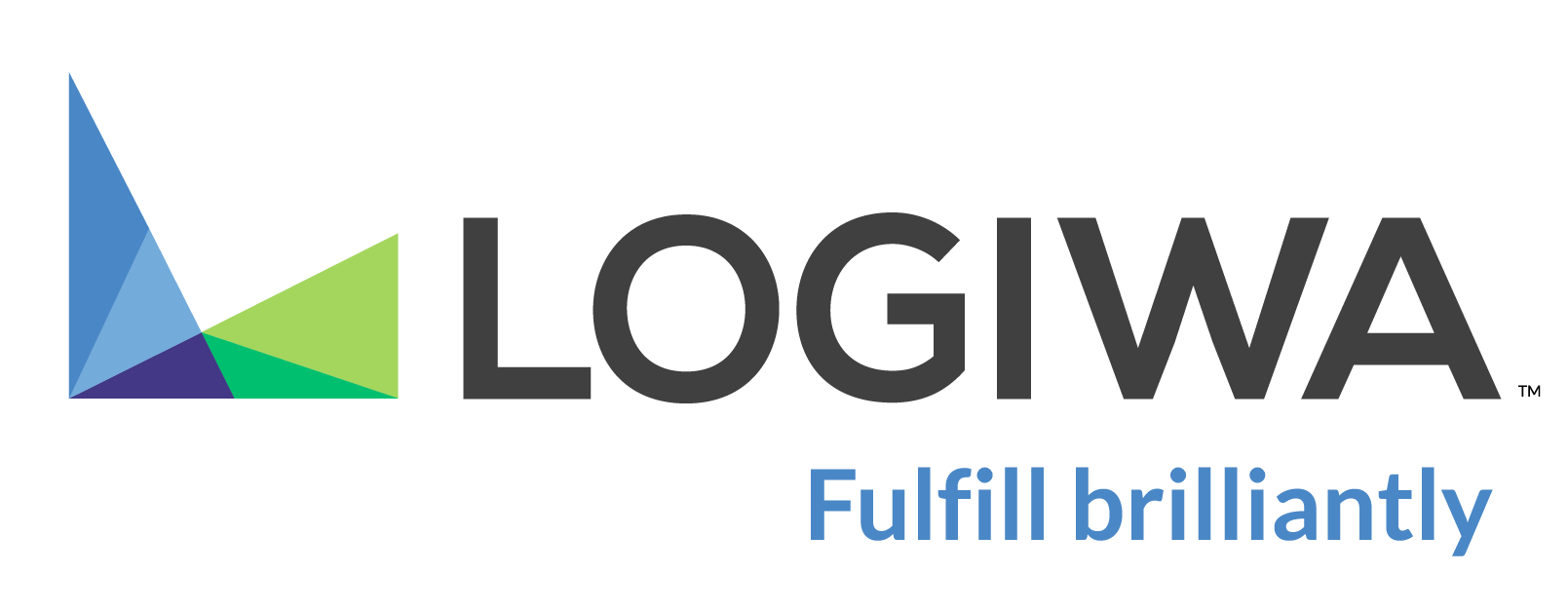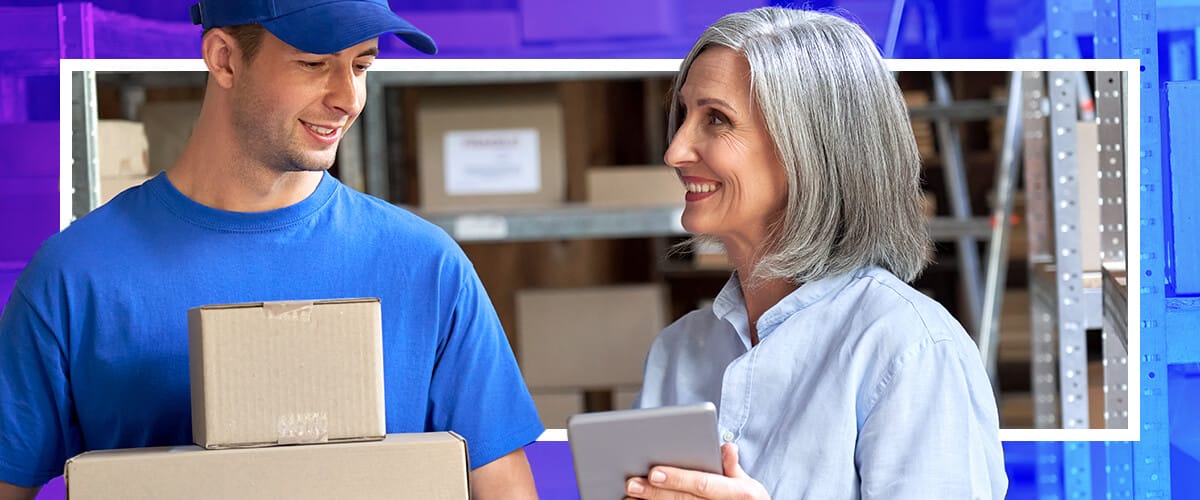Micro-fulfillment centers (MFCs) are smaller local warehouses strategically located in urban areas with large populations or close to residential areas. 3PL providers distribute inventory to MFCs, which are then delivered to customers.
Read more to learn how 3PLs leverage MFCs to facilitate last-mile delivery optimization, and how automation and robotics are prepping MFCs to revolutionize fulfillment operations in the future.
- The role of micro-fulfillment centers in last-mile delivery
- How 3pl providers are adopting micro-fulfillment strategies
- The power of automation in micro-fulfillment
- Benefits of micro-fulfillment for 3pls and their clients
- 3PLs use of MFCs and automation to expedite last-mile delivery
- FAQs about 3PLs use of MFCs
The role of micro-fulfillment centers in last-mile delivery
Last-mile delivery is the final phase of fulfillment, when an order leaves the warehouse and is delivered to the end customer’s preferred location, typically at their doorstep or office. Conventionally, 3PL providers complete fulfillment from their central warehouses or distribution centers, which are usually located outside cities where there’s ample space for expansion.
The far-off location of warehouses means that delivery takes longer, making same-day delivery complex and costly. However, micro-fulfillment centers have changed the game and empowered 3PLs to expedite last-mile delivery.
Micro-fulfillment centers are small-scale and highly automated warehouses located in prime urban areas, designed to reduce last-mile delivery time. You can transform random spaces like basements, neglected buildings, and retail shop back stores to build one. 3PLs keep a portion of their inventory in these MFCs that are closer to the end customers than their leading warehouses.
The benefits of micro-fulfillment centers in last-mile delivery
MFCs benefit 3PLs in the following ways:
- Facilitates on-demand and same-day delivery by shortening transit time: Fulfilling orders from an MFC closer to the consumer reduces transit distance and time. With proper logistics planning, such as filtering a customer’s exact location from their orders, 3PLs can offer instant and same-day delivery to customers within the geographical reach of a micro-fulfillment center.
- Cost reduction in last-mile delivery: Thanks to shorter transit distances, MFCs lower transit costs and reduce the risk of damages. Using robotics in micro-fulfillment centers also reduces their operational costs by a substantial percentage.
- Promotes local economy: MFCs provide direct and indirect jobs to local communities. For instance, one MFC can employ parkers and other service vendors such as food and security.
How 3pl providers are adopting micro-fulfillment strategies
3PL providers are leveraging the following approaches to adopt and successfully implement micro-fulfillment strategies:
Forging partnerships with retailers
Local retailers are strategically placed to advance micro-fulfillment strategies. They’re already located in prime areas close to their target customers. Most retail stores occupy locations with convenient infrastructure access, tight security, and heavy foot traffic. These qualities make retail stores the perfect place to base a micro-fulfillment center.
Secondly, retail stores have inventory management expertise and trained delivery personnel. That means that 3PLs don’t have to train retail staff from scratch or incur heavy up-front costs like investing in a new inventory management system. In most cases, 3PLs can integrate their fulfillment systems with a retailer’s and get down to business.
Finally, it’s easier for retail stores to create space for a micro-fulfillment center without affecting their operations or cutting back on retail space. And this is because MFCs only need a small operating and storage space. 3PLs primarily store fast-moving products like consumer electronics and beauty accessories that don’t stay in storage for long.
Partnering with retailers is a wise move for 3PLs. Running a micro-fulfillment center out of a retail store enhances localized distribution, storage, inventory management, and shipping operations. This boosts the accuracy and speed of last-mile delivery operations.
Leveraging existing infrastructure
Because MFCs don’t need extensive real estate, 3PLs can quickly refurbish existing commercial spaces such as parking garages and malls. Such spaces only require minimum renovations to transform them into functional MFCs.
Even better, these spaces are mostly located in busy urban areas, which are also the ideal target locations for 3PLs. It’s more convenient and cost-effective for 3PL providers to transform existing infrastructure into an MFC than to build one from scratch.
Case studies of successful implementation of micro-fulfillment strategies
Amazon and Instacart have successfully implemented micro-fulfillment in last-mile delivery models. For Amazon, fulfillment centers have long been part of their delivery system. Amazon runs over 175 fulfillment centers worldwide, which play a significant role in enabling Amazon’s robust inventory management system that facilitates last-mile delivery success.
In 2022, Instacart announced the launch of micro-fulfillment warehouses to meet expedited delivery expectations and compete with Amazon’s fast delivery network. Given that Instacart had over 14 million active users in 2023, it’s safe to say its decision to invest in micro-fulfillment warehouses paid off.
The power of automation in micro-fulfillment
The primary advantage of a micro-fulfillment center is its agility in managing fulfillment operations efficiently using fewer resources (space, labor, infrastructure, money, and time). MFCs actualize this by leveraging advanced technologies such as robotics and artificial intelligence, data analytics and real-time tracking in logistics, and autonomous delivery vehicles.
These technologies empower MFCs to:
- Fulfill orders quickly and efficiently
- Reduce human error and labor costs
- Predict the amount of inventory to store
- Optimize delivery routes
- Automate product retrieval and packaging
Ultimately, the end goal of automation in logistics and MFCs is to expedite delivery times without skyrocketing operational costs. All future MFCs must leverage the power of automation to achieve optimal operational efficiency and remain profitable and competitive.
Benefits of micro-fulfillment for 3pls and their clients
Micro-Fulfillment Centers (MFCs) are changing the game for third-party logistics (3PL) providers. They help 3PLs streamline operations, deliver faster, and cut costs—all essential for keeping customers happy and building loyalty. Here’s how:
- Operational Efficiency: MFCs streamline fulfillment operations, allowing 3PLs to scale efficiently while offering faster delivery options.
- Customer Satisfaction: Speed and reliability are key to enhancing the customer experience, which helps 3PLs and retailers build loyalty.
- Cost Reductions: By using automation and strategically placing MFCs, 3PLs can significantly reduce last-mile delivery costs and pass on savings to their clients.
3PLs use of MFCs and automation to expedite last-mile delivery
Micro-fulfillment and automation are intertwined, and 3PL providers should leverage them simultaneously. Doing so enables 3PLs to adapt quickly to the dynamic demands of last-mile delivery. MFCs reduce fulfillment costs, facilitate fast delivery, and enhance overall customer satisfaction, which is all the more reason to embrace them and optimize for large-scale deployment.
Schedule a call with one of Logiwa’s fulfillment specialists to discover how AI-driven, cloud-based fulfillment can help optimize your fulfillment networks.
FAQs about 3PLs use of MFCs
What does micro-fulfillment in last-mile delivery mean?
Which modern technologies must an MFC have?
To remain sustainable and maintain its competitive edge, an MFC must integrate automation and AI, which are at the heart of fulfillment operations. Automation includes using robotics and automated delivery vehicles in MFCs to retrieve and package products as per order instructions. Fast-developing AI technologies like robotics and Internet of Things (IoT) are revolutionizing modern fulfillment and any serious fulfillment provider must invest in these technologies from the get go.
What is the cost of building a micro-fulfillment center?
The cost varies depending on circumstances such as the location, size of MFCs, real estate rates, and level of automation applied. It also matters how much renovation is required to a site to convert it to an MFC or whether you construct one from scratch. However, the takeaway is that MFCs are significantly cheaper to build than warehouses, and the upfront investment can pay off down the road.





